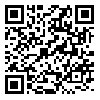BibTeX | RIS | EndNote | Medlars | ProCite | Reference Manager | RefWorks
Send citation to:
URL: http://ioh.iums.ac.ir/article-1-107-en.html
Background and aims
Awkward posture has been recognized as one of the important risk factors of work-related musculoskeletal disorders (WMSD). The current study aimed at determining ergonomic risk level, WMSDs ratio and exploring working postures contribution to WMSD. During the study, working postures were phased and then they were scored using the REBAtool from observing the work.
Methods
To perform the study, workers of a home appliances manufacturing factory were assessed. In order to collecting required data, each part of the body was scored and work frequency, load/force, coupling were considered to achieve a REBA score. Nordic Questionnaire was used to determining WMSD ratio and its relationship whit REBA score. 231 working phases were assessed and 13761 questions using Nordic Questionnaire were answered. Percentage of the workers in press, spot welding, grinding, cutting, assembling, and painting was 15.8, 21.6, 25.9, 34.5, 89.9%, respectively. Workers were 18-54 years old and their work recording average was 52 month.
Results
REBAscore was 4-13 in under study tasks. REBA score = 9 had the most frequency (20%) and REBA score =13 had the least frequency (1.4%). Risk level in press, cutting, and painting was high (25.5, 100, 68.2%) cases). This shows that cutting has the highest risk level. On
the other hand 38.5% of the workers in past 12 month had problem in different parts of their body. Totally 11.7% of the workers had problem in neck, 19.4$ in leg, 10.7% in foot, 82.5% in lower back, 87.6% in upper back and 7.8% in shoulders.10.7% of the workers had previous illness that 8.7% of them were non occupational and 1.9% were caused their previous jobs. The REBAscore mean and ergonomic risk level is not equal in tasks (p-value<0.05) and there is a relationship between age, work recording, REBAscore and risk level .(p-value <0.05, r>0). Action level was necessary soon in others.
Conclusion
Risk level should be reduced specially in cutting. The heavy workload and working height poor design, awkward posture such as twisting with bending and sometimes carrying objects, standing/sitting for a long time during working shifts are some of the ergonomic risk factors.
| Rights and permissions | |
 |
This work is licensed under a Creative Commons Attribution-NonCommercial 4.0 International License. |





